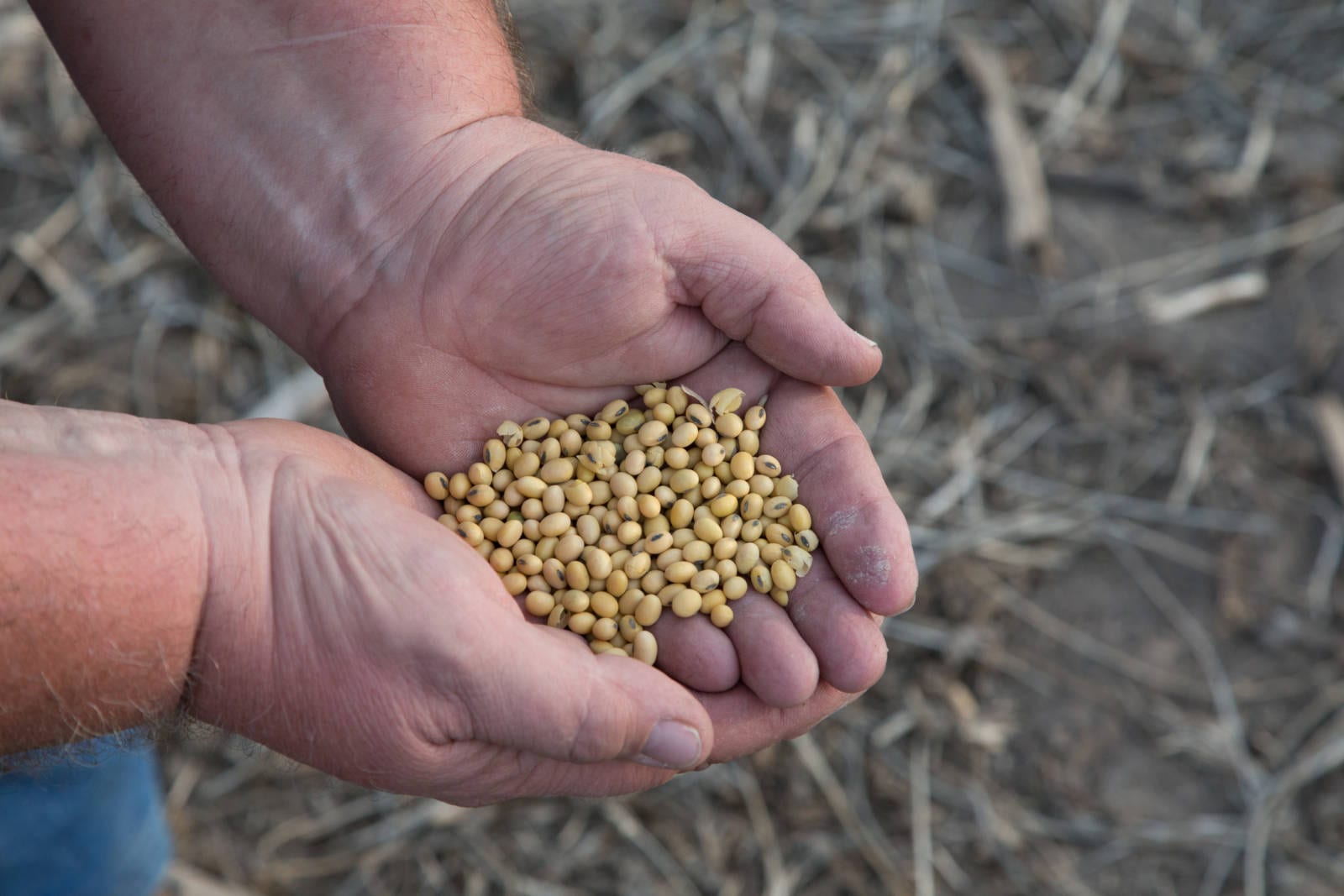When buyers consider purchasing U.S. soybeans, it is important that they know that no matter where the product comes from in the country, it will be of similar composition, quality and reliability. Protein and oil levels can differ state by state, even in different parts of the same state. U.S. soybean farmers are working to minimize the differences by understanding what works best in each state to achieve optimal compositional quality.
To meet the growing demand for high-protein soybeans, several Qualified State Soybean Boards (QSSB) across the U.S. are engaged in deeper analysis of the composition and quality of U.S. soy. These groups are investing in research and projects dedicated to increasing the value of U.S. soy through meal improvements, including increased levels of protein in the soybean and an improved nutritional bundle for their customers.
These state-wide projects complement national research and offer a comprehensive view of U.S. soybean composition and quality. Having projects dedicated to specific regions provides precise data for farmers. This gives soybean farmers across the U.S. updated and accurate information and research to inform their own decisions about how to meet the needs of international customers.
Here are how a few U.S. states are addressing compositional quality.
Illinois – Seed Selection and Analysis
The Illinois Soybean Association launched a program in 2015 called HY+Q (high yield PLUS quality) that aims to keep Illinois farmers up-to-date on soybean quality and yield improvements, working with seed companies to create these higher-value seeds.
As a program benefit, farmers can request an analysis of the protein and oil levels of their soybeans. The HQ+Y program also provides them with resources on how they can continue to grow the best possible soybeans given their location, soil type, weather conditions and more. In 2018 and beyond, the group will focus on measuring amino acid content in soybeans in addition to the overall protein makeup.
Minnesota – Amino Acid Examination
The Minnesota Soybean Research and Promotion Council recently visited Vietnam to share the message of amino acids and their importance to soybean quality. Soybeans grown in the northern regions of the U.S., like Minnesota, often receive lower crude protein scores. However, new research (https://ussoy.org/u-s-soybean-composition-and-quality-in-2018-what-you-should-know/) is showing that northern soybeans have high critical amino acid value, which is useful for animal nutritionists in creating their feed blends.
North Carolina – Extreme Weather Trials
The North Carolina Soybean Producers Association funded a research project that evaluates seed composition stability for high protein seed varieties under environmental stress such as drought or high temperatures. Farmers can use the information provided by this project to assist them in seed selection decisions. For example, if a farmer lives in a certain area where high temperatures are more common, such as the southern United States, they would know which varieties are best suited for that area. This also helps breeders’ continuing germplasm development by getting real-world data and feedback on success.
Ohio – Best Management Practices
The Ohio Soybean Council funded field trial research with The Ohio State University to identify inputs that contribute to soybean seed quality. The three-year study evaluated soybean oil and protein across the state of Ohio. Results showed that applying state-recommended levels of phosphorus and potassium correlated to higher protein and oil levels in soybeans. This is a simple way for farmers to work towards ideal protein and oil levels with another production tactic.
Pennsylvania – Seed Variety Trials
Penn State agronomists worked with the Pennsylvania Soybean Board to conduct 2017 Soybean Performance Trials on both early and late glyphosate-resistant varieties and non-glyphosate resistant varieties in test plots at the university’s research centers. A total of 142 varieties were tested and recorded when harvested for yield, protein and oil levels. Results were then made available for farmers in the state to access. This can help producers have better access to seed varieties that are proven to hit ideal levels in their area.
These projects and the information gathered can assist individual farmers across the U.S. to know their soybean compositional quality values. Nationally, this information will help ensure a consistent and nutrient dense soybean product, which will not only ensure reliability across the U.S., but also benefit U.S. soy customers by offering an exceptional and measurable product.
